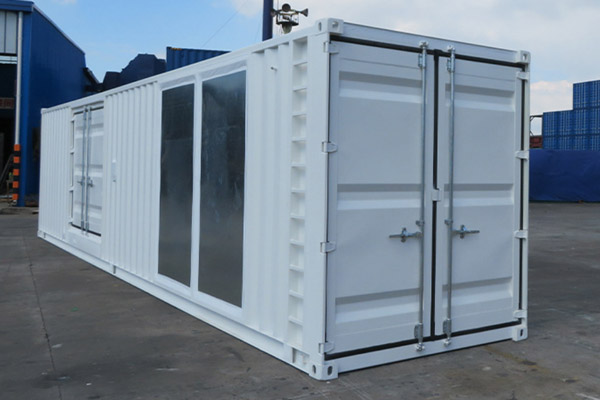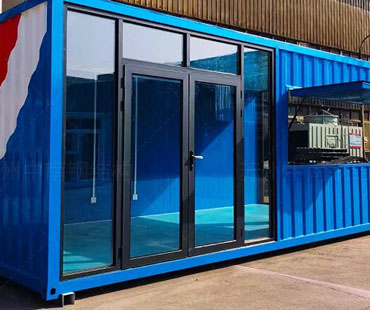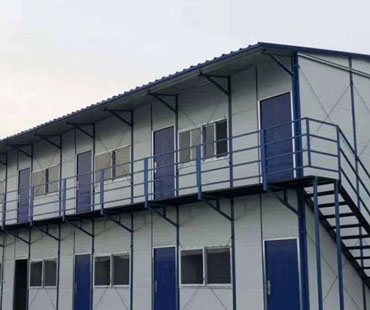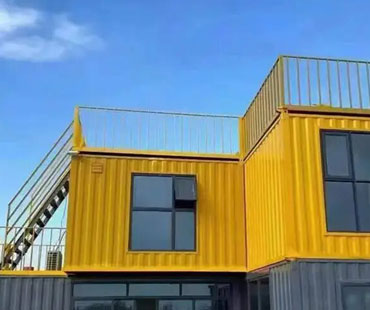In recent years, the increasing frequency of natural disasters in China—such as earthquakes, floods, and typhoons—has highlighted the urgent need for effective disaster relief solutions. With millions of people displaced due to such calamities, traditional emergency housing options often fall short in terms of speed, cost, and sustainability. In this context, container homes have emerged as a viable and innovative solution for disaster relief and emergency housing.
Container homes, repurposed from shipping containers, offer several advantages that make them particularly well-suited for disaster relief:
1.Rapid Deployment: One of the most significant benefits of container homes is their ability to be rapidly deployed. They can be transported easily by truck or ship and set up quickly in affected areas. This is crucial in the aftermath of a disaster when time is of the essence, and displaced populations require immediate shelter.
2.Durability and Security: Shipping containers are designed to withstand harsh conditions at sea, making them inherently durable and secure. They can provide a safe haven for families during times of crisis, protecting them from the elements while offering a sense of stability amidst turmoil.
3.Modular Flexibility: Container homes can be easily modified and combined to create larger living spaces or community housing solutions. This modularity allows for the accommodation of varying family sizes and needs, making them adaptable to different disaster scenarios.
4.Cost-Effectiveness: Compared to traditional building methods, container homes are often more cost-effective. Repurposing existing containers reduces material costs and construction time, allowing for a more efficient allocation of resources during emergencies.
5.Sustainability: Container homes promote sustainability by recycling materials that would otherwise contribute to landfill waste. Furthermore, they can be equipped with energy-efficient systems, such as solar panels and rainwater harvesting, to minimize their environmental impact.

Case Studies in China
China has begun to implement container homes as part of its disaster relief strategy. After the devastating earthquake in Sichuan in 2008, container housing units were deployed to provide immediate shelter for the affected population. These units were designed to be livable, with basic amenities and privacy, helping to restore a sense of normalcy for families during a challenging time.
More recently, during the floods in 2020, container homes were used in various provinces to provide rapid shelter for displaced residents. Local governments partnered with private companies to design and deploy these homes, which included features like ventilation, insulation, and electrical systems, ensuring that they were not only functional but also comfortable.
Challenges and Considerations
Despite their many advantages, the implementation of container homes in disaster relief is not without challenges. One significant concern is the need for adequate infrastructure to support the installation and maintenance of these homes. In some remote areas, access to utilities such as water and electricity can be limited, necessitating additional planning and resources.
Moreover, while container homes can provide immediate relief, they are not a long-term housing solution. As such, it is essential for disaster response strategies to include plans for transitioning families from temporary container housing to permanent homes once the immediate crisis has passed.
As China continues to face the realities of climate change and its associated natural disasters, container homes represent a forward-thinking approach to disaster relief. By investing in the development and deployment of these structures, the government and humanitarian organizations can enhance their emergency response capabilities, ensuring that displaced populations receive timely and effective support.
In conclusion, container homes offer a promising solution for disaster relief and emergency housing in China. Their rapid deployment, durability, cost-effectiveness, and sustainability make them an ideal choice for addressing the pressing housing needs of communities affected by natural disasters. By embracing this innovative approach, China can better prepare for future challenges and ensure that its citizens have access to safe and secure shelter in times of crisis.


